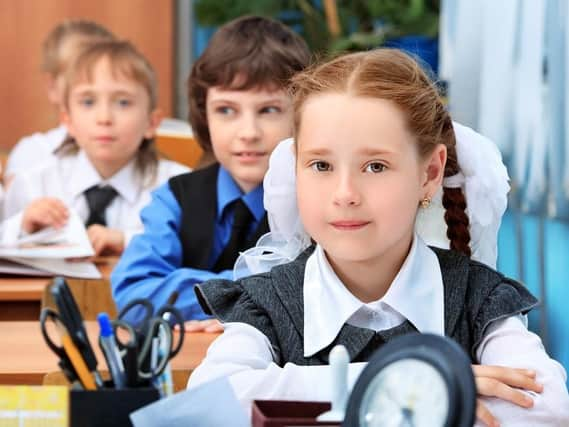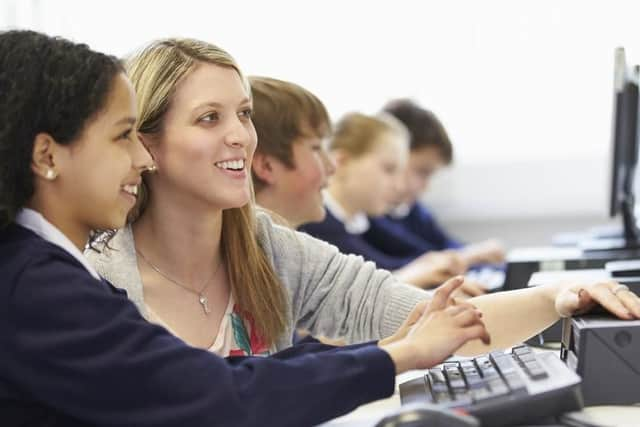Too elite? Independent school myths debunked


From the elite and imperious Hogwarts, to the brutal hot-house boarding school in If…, popular culture has done a great deal to help people form a peculiar and distinctly coloured idea of what an independent school is like. Elite, exclusive, unwelcoming… the image of independent schools as crusty old insular institutions endures to this day.
But is it in any way fair?
According to the Scottish Council of Independent Schools, independent schools are far more accessible and inclusive than many might think.
Advertisement
Hide AdAdvertisement
Hide Ad

Here, we dispel the myths surrounding the popular image of independent schools.
Myth: They’re for rich families
Reality: Children from all kinds of backgrounds attend independent school, and schools are sensitive to the sacrifices many parents make in order to afford their child’s school fees.
In Scotland, a quarter of the children attending independent schools receive financial assistance with three per cent having all of their fees paid by one school. Bursaries are available to assist families with lower incomes, while scholarships are awarded to children who have demonstrated outstanding academic, sporting or artistic potential, or general excellence.


Myth: They don’t encourage children to be part of community
Reality: Many Scottish independent schools have working relationships with charities, which pupils are enlisted to work with and fundraise for.
Some have educational projects in far-flung countries like Africa and beyond, again working to encourage children to contribute to the world around them.
Pupils are also encouraged to take part in extra-curricular activities that ensure they have a feel for the real world, too, such as community service, the Duke of Edinburgh award and outdoor education.
Myth: They’re for very clever kids
Reality: Independent schools are renowned for having a high level of academic attainment and for a high percentage of pupils going on to university. But that by no means limits the school’s attendees to the academically gifted.
A wide variety of subjects are available, from Latin, to drama, politics to computer science, meaning children can thrive in whatever field they display a passion or aptitude for.
Advertisement
Hide AdAdvertisement
Hide AdAdditionally, being able to achieve qualifications from a variety of examination boards, including Scottish Qualifications Authority exams, GCSEs, A-levels and the International Baccalaureate, is an egalitarian means of encouraging pupils towards success: it allows greater scope for them to turn their interests into qualifications.
Myth: They’re rugby playing boy clubs.
Reality: 49 per cent of all independent school attendees are girls.
And while you can certainly play rugby at independent schools if you want to, it is by no means mandatory or the only extra-curricular activity available. There are myriad sports and activities on offer, including some that you’d struggle to find the opportunity for elsewhere. At Gordounston, for example, pupils spend time crewing the school yacht, while Strathallan has a clay pigeon shooting academy and Kilgraston has an on-site equestrian centre.
Parents are often surprised to learn many independent schools have very strong football teams.
Past-times are not limited to sports, either. Many creative activities are available, from orchestras, drama clubs, musical theatre, to all manner of societies.
Myth: They’re elitist and lack diversity
Reality: You may well end up with a more diverse culture mix at an independent school than a state school: a third of the pupils at independent boarding schools in Scotland are overseas students, hailing from Spain, Germany, Russia, China, among others. There are students and teachers of all ethnic and religious backgrounds. This makes for a vibrant, modern community that reflects the real world and encourages tolerance and understanding of differing cultures.
Myth: They’re impersonal
Reality: It’s quite the opposite. Smaller pupil to teacher ratios (on average, there is one teacher for every eight pupils attending an independent school in Scotland) means that children benefit from close attention and a more personalised learning environment.
To find out more about independent schools in Scotland, visit www.scis.org.uk